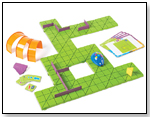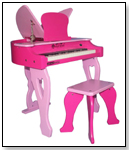|
|
Hispanic consumers – a neglected major factor in the toy space Ignoring these consumers could spell toy troubleWhen you walk down the toy aisles of any major retailers you will get the impression that North America's population is totally white. Yes, there is the occasional, very occasional, brown doll or the toy box that features kids other than lily-white ones but basically these are just token nods to the fact that perhaps not everybody is of English or German stock. Truth is, of course, that the United States is a rainbow-coloured nation and this statement is particularly appropriate if you consider the Hispanic population. According to the United States Census estimates for 2014, the total U.S. population numbers about 319 million. Of these, 17.1% are of self-declared Hispanic descent. If you add in the estimated 9 million undocumented Hispanic immigrants, presumably outside the purview of the census takers, you get to a total of 63 million or about 20% of the total. Looking further out, the Hispanic population is expected to reach about 106 million in 2050 out of a projected total of 400 million – more than a quarter of the U.S. population. Hispanics are not only a population factor, they also are a very potent force economically. They represented one trillion dollars in buying power in 2010 and this is expected to rise to $1.5 trillion this year, which means an increase of 50% in just five years. They are also thought to buy toys at a rate of about four to five billion Dollars this year. That is why it is so surprising that the major toy manufacturers have paid so little attention to this consumer group. Out of the tens of thousands of toys sold by ToysRUs, only twenty-three are devoted to the Hispanic child and most of these are focused on the two-to–four years age group. Of these twenty-three toys, only four are from Mattel and the same from Hasbro. There are four fashion dolls and one game – Scrabble from Hasbro. In short, the word "afterthought" leaps to mind. In the specific case of Mattel, their appeal to the Hispanic market has traditionally been to include the token Latina doll into a given year's Barbie range. Out of today's 151 Barbie Fashion Dolls there are two Hispanic versions – the 2015 Birthday Wishes Barbie and Barbie Entrepreneur. In fact, Mattel made a major effort in 2013 to court the Hispanic mothers. The company thought of a way to boost sales during the most-important fourth quarter by connecting with the Hispanic mothers, those that buy all the toys, by launching an advertising campaign called "Toy Feliz". In Mattel's own words, the thinking was that by reaching out "more directly, more deliberately and more authentically to Latina moms, we could really elevate the business and drive growth." Unfortunately, it did not work out quite the way the company had hoped. Its U.S. business dropped in that same fourth quarter like a rock – nearly 14%. What this tells you is that you cannot approach the Hispanic community, or at that any other, as a short term expedient. You have to work at it, develop it, and then execute over the longer term. In other words, you take a commitment. One of the reasons why the leading manufacturers are somewhat hesitant in diving fully into the Hispanic market is that the purchase motivation in this group is different from the Caucasian one. I carried out a number of research projects focused on this subject and what struck me was that communal play and reassurance were the two main factors in the view of the Hispanic children. Specifically, out of twelve questions, the top four chosen were: · The toy lets me do lots of other things than what is on the box · My parents like the toy or the people who made it · The toy lets me play with my friends · The toy lets me play with my parents In comparison, Caucasian children had a very different focus. Their top four responses were: · None of my friends have it – it is new. · I can play with the toy all by myself · I saw the character in a movie or on TV · I like the box and the many things in it This difference in focus has a number of implications. For one, movies or TV films have an overriding influence on Caucasian children but much less so for Hispanic chicldren. Also, the Caucasians see the toy as it relates to him or herself only whereas the Hispanic kids see its importance in how it performs in a group setting and this has implications on product attributes and package design. However, while the overall toy space devoted to Hispanic children is still sparse, three companies are trying to change this. One of them is MGA Entertainment of Bratz and Lalaloopsy fame. They launched their Vi and Va range a couple of months ago and now have thirteen SKUs at Target and seven linear feet shelf space. Given their very short time of the market, the Vi and Va range is moving well. It is interesting to read MGA's description of the two core dolls –Viviana and Valentina – hence Vi and VA: "Two sisters and best friends with their cousins Felicia and Roxxi. Every day is an adventure and a reason to celebrate the bond of family and friendship." |
| ||||||||||||||||||||||||||||||||
Disclaimer Privacy Policy Career Opportunities
Use of this site constitutes acceptance of our Terms of Use.
© Copyright 2025 PlayZak®, a division of ToyDirectory.com®, Inc.

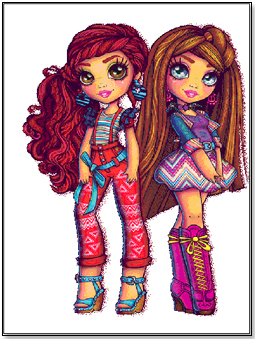
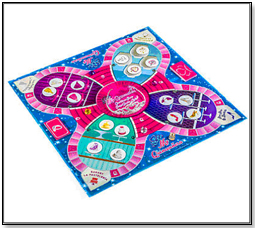
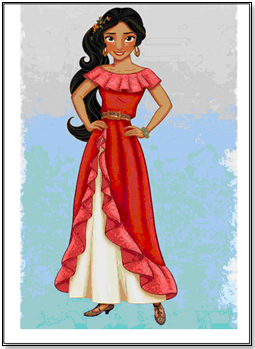
 Writer's Bio: Lutz Muller is a Swiss who has lived on five continents. In the United States, he was the CEO for four manufacturing companies, including two in the toy industry. Since 2002, he has provided competitive intelligence on the toy and video game market to manufacturers and financial institutions coast-to-coast. He gets his information from his retailer panel, from big-box buyers and his many friends in the industry. If anything happens, he is usually the first to know. Read more on his website at www.klosterstrading.com.
Writer's Bio: Lutz Muller is a Swiss who has lived on five continents. In the United States, he was the CEO for four manufacturing companies, including two in the toy industry. Since 2002, he has provided competitive intelligence on the toy and video game market to manufacturers and financial institutions coast-to-coast. He gets his information from his retailer panel, from big-box buyers and his many friends in the industry. If anything happens, he is usually the first to know. Read more on his website at www.klosterstrading.com. 
